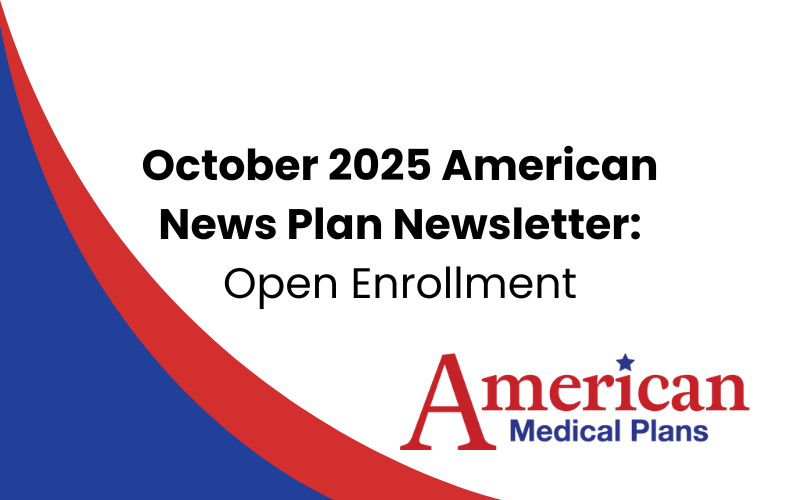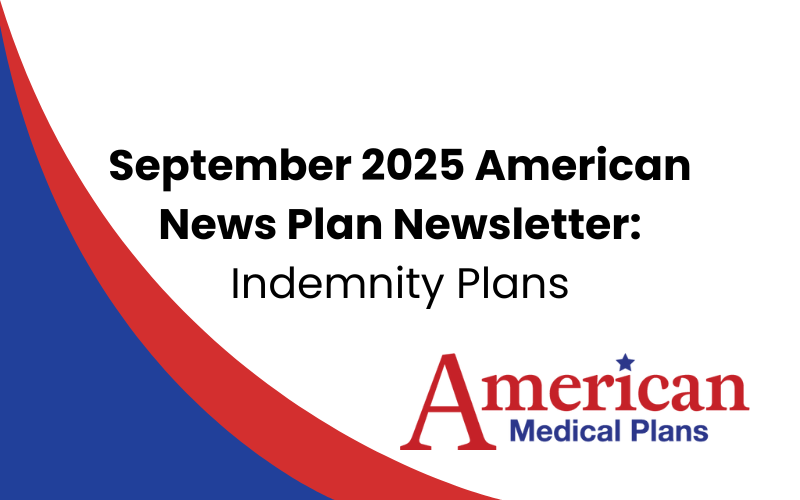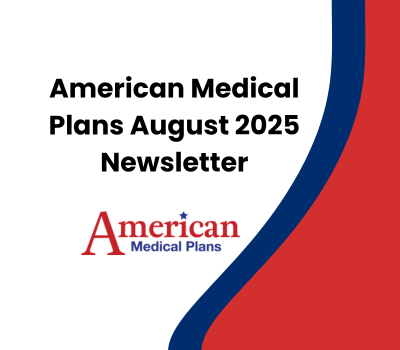November 2025 Newsletter
Navigating the Open Enrollment Maze: Why a Private PPO Plan Is Your Best Bet for 2026

Open Enrollment season is upon us, and with it comes the annual headache of navigating a complex sea of health insurance options. You’ve heard the acronyms—HMO, EPO, POS—but the one that should be at the top of your list, especially with the storm clouds gathering over the ACA marketplace, is PPO, or Preferred Provider Organization.
As we look toward 2026, the Affordable Care Act (ACA) marketplace is facing a potential pricing earthquake. The enhanced premium tax credits (subsidies) that have shielded millions from high costs are set to expire. The result? Projections show a massive spike in ACA premiums, with some estimates pointing to median increases of 18% to 20% or more.
This impending "subsidy cliff" will hit middle-income individuals and families the hardest—precisely those who earn just enough to be disqualified from assistance. If you're one of them, you’re about to be fully exposed to the high costs of marketplace plans, all while potentially being locked into a restrictive network.
This is why, now more than ever, it’s time to seriously consider the stability, flexibility, and long-term value of a private PPO plan.
The Problem with Other Plans: A Quick Rundown
Before praising the PPO, let’s look at the alternatives you’ll find on the marketplace. These plans are often cheaper, but that savings comes at a significant cost: your freedom.
- HMO (Health Maintenance Organization): This is the most restrictive option. You
must choose a Primary Care Physician (PCP) from within their network. This PCP acts as a "gatekeeper," meaning you
need a referral from them just to see a specialist, like a dermatologist or a cardiologist. Want to see a doctor outside their small, local network? Forget about it. Unless it's a life-threatening emergency, you’re paying 100% of that bill yourself.
- EPO (Exclusive Provider Organization): An EPO is a slight step up. You generally don't need a referral to see a specialist. However, just like an HMO, it’s an "exclusive" network. You have zero coverage for any out-of-network provider. If your trusted doctor or a highly-rated specialist isn't on their list, you're out of luck.
- POS (Point of Service): This plan tries to be a hybrid. Like an HMO, you typically need to pick a PCP and get referrals. It offers some out-of-network coverage, but the paperwork is burdensome, and the reimbursement rates are often frustratingly low, leaving you with surprise bills.
The PPO Difference: Paying for Freedom and Control
This brings us to the PPO (Preferred Provider Organization). A PPO is built on one simple, powerful concept: choice. It is the premium option for those who value autonomy over their own healthcare decisions.
Yes, the monthly premium is typically higher than an HMO's. But what you are buying with that premium is invaluable.
1. Unmatched Network Flexibility
A PPO has a large "preferred" network of doctors and hospitals, but its defining feature is its out-of-network coverage.
- Stay In-Network: You get the highest level of coverage and lowest costs by using doctors and hospitals within the PPO network.
- Go Out-of-Network: Want to see a specific specialist who isn't on the list? Need to see a doctor while traveling? No problem. The PPO plan will
still pay a portion of the bill. You’ll have a higher copay or coinsurance, but you won't be stuck paying the entire cost, unlike with an HMO
or EPO. This peace of mind is the PPO's greatest strength.
2. No Referrals, No Gatekeepers
With a PPO, you are in the driver's seat. You do not need to select a Primary Care Physician and, most importantly, you never need a referral to see a specialist.
If you wake up with a suspicious-looking mole, you can call and book an appointment with a dermatologist directly. If your knee is acting up, you can go straight to an orthopedist. You don't need to book an initial appointment with a PCP just to get permission to see the doctor you actually need. This saves you time, money (in the form of an extra copay), and frustration.
The 2026 ACA Warning: Why PPOs Are a Smarter Haven
The flexibility of a PPO is always valuable, but it becomes critically important in light of the looming ACA crisis.
The ACA marketplace has provided a crucial safety net, especially for those with pre-existing conditions or lower incomes. But for healthy individuals and families who earn a decent living, that "safety net" is about to be pulled away.
When the enhanced subsidies expire at the end of 2025, anyone earning over 400% of the federal poverty level (roughly $60,240 for an individual or $124,800 for a family of four) will likely lose their subsidy entirely. You'll be asked to pay the full, unsubsidized premium for an ACA plan—a price that is set to skyrocket.
Why pay a skyrocketing premium for a restrictive HMO or EPO plan when, for a similar price, you could have a private PPO?
With a private PPO, your premium is based on your health and the plan's benefits, not on a volatile, subsidy-driven market. You are buying a high-quality, stable insurance product that gives you control. You get a nationwide network, the freedom to see specialists, and the security of knowing you are covered even if you step out of network.
As you enter Open Enrollment, think beyond the sticker shock of the monthly premium. Calculate the true cost. Consider the co-pays for extra gatekeeper visits, the financial risk of a plan with no out-of-network coverage, and the sheer frustration of being denied care you want.
With ACA premiums set to jump, 2026 is the year to opt out of the restrictive marketplace maze and invest in the superior freedom of a PPO.
Quinn Lewis
American Medical Plans, Inc.
© 2025 All Rights Reserved | American Medical Plans
References
- Anthem. (n.d.). Types of health insurance plans. Retrieved October 28, 2025, from https://www.anthem.com/individual-and-family/insurance-basics/health-insurance/types-of-health-insurance-plans
- CalPERS. (2024, September 16). HMO, PPO, and EPO: What's the difference and why does it matter? CalPERS News. https://news.calpers.ca.gov/hmo-ppo-and-epo-whats-the-difference-and-why-does-it-matter/
- Cigna. (n.d.). What is PPO insurance? Retrieved October 28, 2025, from https://www.cigna.com/knowledge-center/what-is-ppo-insurance
- Cox, C., & Long, M. (2025, August 6). How much and why ACA Marketplace premiums are going up in 2026. KFF. https://www.healthsystemtracker.org/brief/how-much-and-why-aca-marketplace-premiums-are-going-up-in-2026/
- Healthcare.gov. (n.d.). Health insurance plan & network types: HMOs, PPOs, and more. Retrieved October 28, 2025, from https://www.healthcare.gov/choose-a-plan/plan-types/
- Healthcare.gov. (n.d.). Private plans outside the Marketplace outside Open Enrollment. Retrieved October 28, 2025, from https://www.healthcare.gov/private-plan-exceptions-outside-open-enrollment/
- Healthcare Insider. (2025, October 22). Why did my ACA premium go up? 5 factors driving 2026 rate hikes. https://healthcareinsider.com/why-will-my-health-insurance-premium-go-up
- HealthPlusLife. (2025, October 13). Why private health insurance costs differ from Marketplace plans. https://healthpluslife.com/health-insurance/private-health-insurance-costs-from-marketplace-plans/
- KFF. (2025, October 28). 8 things to watch for the 2026 ACA Open Enrollment Period. https://www.kff.org/affordable-care-act/8-things-to-watch-for-the-2026-aca-open-enrollment-period/
- Medicare Rights Center. (2025, August 7). Affordable Care Act Marketplace premiums expected to skyrocket. https://www.medicarerights.org/medicare-watch/2025/08/07/affordable-care-act-marketplace-premiums-expected-to-skyrocket
- Terry Family Insurance. (n.d.). ACA vs. private health insurance: Which plan saves you more? Retrieved October 28, 2025, from https://terryfamilyinsurance.com/aca-vs-private-health-insurance-which-ones-right-for-you/
- Thompson, C. (2025, October 22). Health insurance sticker shock begins as shutdown battle over subsidies rages. The Washington Post. https://www.washingtonpost.com/health/2025/10/22/obamacare-aca-enrollment-price-increases/
- UnitedHealthcare. (n.d.). What are HMO, PPO, EPO, POS and HDHP health insurance plans? Retrieved October 28, 2025, from https://www.uhc.com/understanding-health-insurance/types-of-health-insurance/understanding-hmo-ppo-epo-pos



